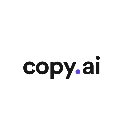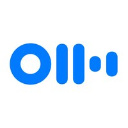Improve your efficiency without breaking the bank with these 15 free AI programs
Artificial intelligence is not just growing, it's exploding in every sector. Whether you're a business owner or a manager, the urgency is the same: adopt effective AI software to optimise your work, automate every relevant task and generate quality content without blowing your budget.
☝️ What if we told you that you could access high-performance tools without spending a penny? We've got 15 free AI software programs, applications or generative AI platforms that really get the job done: writing text, creating images, automating your meetings or exploiting business data.
Bear in mind that innovation doesn't always have to cost an arm and a leg: sometimes a free version or freemium offer is enough to transform the way you create and structure content, without having to switch to a paid plan.
Why use free AI software?
💸 It helps mitigate the financial risks: a free AI tool or a free freemium version offers quotas or limitations on functionality but allows exploration without committing to a paid subscription. In practice, this is the first level of testing:
- you use the application,
- generate some text,
- create an image,
- automate a simple task.
Then we can validate concrete use cases:
- content creation,
- chatbot,
- meeting summary,
- image or video generation,
- data analytics,
- marketing copywriting assistance.
The free version allows these uses to be tested in real-life conditions before upgrading to a paid version if necessary. This fast-track approach is validated by feedback from teams who compare the user experience, functionalities, integration with business tools and ergonomics.
Finally, it brings real strategic agility. You remain free to :
- change tools
- compare the UX,
- evaluate data thresholds
- test premium plan options.
A free tool allows teams to prototype, test a usage model, and outline a roadmap without being closed to technological developments. You stay in control, you stay in a learning process, iterative creation and pragmatic innovation.
🧠 This three-tiered approach - risk mitigation, rapid validation and strategic flexibility- is based on a tried and tested freemium model, which is very widespread in professional SaaS. Many tools such as ChatGPT, Notion AI, Grammarly or Otter.ai offer a free version that is sufficient to produce content, test use cases and judge the immediate benefits without commitment. In short, you reduce costs, test in a real environment and remain agile: this is the winning trio for any SME or decision-making team faced with the challenges of scaling up and digital transformation.
Comparative table of the 15 best free AI software applications
1 of 10
 Le Chat (Mistral AI) |  TensorFlow |  Sana Agents |  Grammarly Business |  Reclaim.ai |  Fireflies.ai |  Copy.ai |  Zapier |  Gamma |  Otter.ai |
|---|---|---|---|---|---|---|---|---|---|
| For all companies | For all companies | For all companies | For all companies | For all companies | For all companies | For all companies | For all companies | For all companies | For all companies |
| See software | See software | See software | See software | See software | See software | See software | See software | See software | See software |
| Learn more about Le Chat (Mistral AI) | Learn more about TensorFlow | Learn more about Sana Agents | Learn more about Grammarly Business | Learn more about Reclaim.ai | Learn more about Fireflies.ai | Learn more about Copy.ai | Learn more about Zapier | Learn more about Gamma | Learn more about Otter.ai |
15 free AI programs to improve your efficiency
1. Le Chat (Mistral AI)
Mistral AI's Chat solution is a European alternative to large language models. This French AI tool, based on cutting-edge models, is designed for the advanced conversational agent ecosystem. It meets business needs in terms of text generation and analysis, based on Mistral AI's commitment to respecting European standards and promoting the responsible use of generative artificial intelligence.
Its uncluttered interface gets straight to the point: you ask a question, and it answers you in a matter of seconds, with precise, well-structured, no-frills answers. It's a bit like the colleague who never talks for nothing.
The free version of Chat gives you access to powerful language models, including Mixtral, one of Mistral's open source flagships. You can use it to :
- write a text,
- summarise a document
- generate code
- brainstorm on a business idea.
And all with no registration required.
If you're looking for an alternative to ChatGPT, but one that's more in line with European standards, Le Chat ticks all the boxes. It's free, fast, efficient... and it's great to hear 🇫🇷.

Le Chat (Mistral AI)
2. TensorFlow
We continue with TensorFlow, the open source platform developed by Google, reputed to be the best tool for machine learning and deep learning.
Used in scientific, professional and even educational circles, it is freely available under open source code (Apache 2.0).
TensorFlow can be used to develop complex models for :
- natural language processing
- image recognition
- or automatic decision-making, by integrating massive datasets.
It's the ideal solution for building a text generator, classifying images, or building bespoke AI for your business needs. There's even full documentation for deployment on the web, or on embedded devices.

TensorFlow
3. Sana Agents
We move on to Sana Agents, a platform developed to automate business exchanges using intelligent conversational agents. It can :
- generate relevant text
- automatically answer frequently asked questions
- guide users through complex business processes.
This natural language-based application offers powerful possibilities, such as the creation of an agent with personalised tone, behaviour and objective. All in an intuitive interface, with no need for a developer. It can be used to automate repetitive tasks in sales, HR or support teams, in complete autonomy.
☝️ Even the free version offers a complete experience, with :
- a limited but sufficient number of monthly interactions,
- the ability to configure several agents
- and access to powerful language models.
It's designed to test the business value before upgrading to a paid plan. Whether it's for a lead qualification chatbot or an in-house conversational assistant, Sana Agents is a high-impact tool right from the outset.

Sana Agents
4. DeepSeek
Developed in early 2025 by the company DeepSeek, this chatbot represents a new generation of free conversational agent that rivals ChatGPT. Built to offer fluid language understanding and instant responses to your questions, DeepSeek is positioned as a very credible free option in the generative artificial intelligence landscape. There is an API version for more advanced uses, but the free version of the website is all you need to test its capabilities now.
DeepSeek lets you ask a question about documents, technical issues or even business problems:
- it answers,
- provides explanations
- generate structured text or simple code.
In this way, it can be used as an information generator, rapid writing assistant or exploratory machine learning tool.
💡 Even without a subscription, DeepSeek includes advanced features:
- interactive dialogues in natural language
- logic solvers,
- technical doubts,
- basic code guidance.
It's based on an efficient language model, capable of handling a large number of simultaneous queries, and it offers contextual decision-making in responses. So you can generate text, code or information related to your data or internal processes in a matter of seconds.
5. Taskade
Taskade is a collaborative task management platform launched in 2017, now with advanced artificial intelligence features. Accessible via its website or multiplatform application (desktop, mobile), it offers an AI assistant as well as an automated workflow generator based on the structure of your projects.
🛠️ You can :
- generate content,
- structure your projects
- create lists or mind maps,
- automate task assignment,
- use the project view in real time.
The AI agent assists with the drafting, planning and execution of tasks, while automation considerably reduces repetitive minute work.
Taskade excels in team coordination and project workflows, whether for :
- organising a work plan,
- generating a meeting summary
- or automating the assignment of tasks.
The tool combines notes, tasks and video/chat collaboration in a single common space. Multiple views (list, kanban, mind map, diagram) facilitate intellectual organisation, and the ability to create customised AI Agents means you can industrialise productivity without a developer, using ready-to-use business templates.
6. AutoKey (Linux)
AutoKey is an open source GPLv3 application dedicated to automation on Linux. It lets you create keyboard shortcuts and trigger phrases, or run complete Python scripts to automate everyday tasks.
💡 For example, you can :
- auto-complete email signatures,
- repeat blocks of text,
- develop interactive macros with dialog boxes.
AutoKey can also interact with other applications via keyboard/mouse emulation, read and write files, or perform programmed decisions: perfect for testing, rehearsals or recurring workflows.
Everything works locally, with no cloud connection, so no external data flow. This level of autonomy makes it an invaluable tool for automating repetitive or structured tasks on your Linux workstation, with no limits on functionality or paid subscriptions.
7. Grammarly
Grammarly was born as a tool for improving grammar and style, and its artificial intelligence has evolved to become a genuine writing assistant. It can be used to polish an email or a brand communication with discreet, rigorous elegance.
🛠️ AI :
- identifies errors, ambiguities and inconsistencies in tone,
- suggests more fluid or professional reformulations
- and even helps to structure a message to capture the reader's attention.
After a few tries, you'll notice that even internal emails gain in impact.
Grammarly works on a freemium model : the free version already offers grammar detection, basic suggestions and tone proofreading. It's a good starting point for testing the effect of an editorial assistant on your media, before considering the premium offer if you're looking for more style or nuance.

Grammarly Business
8. Reclaim AI
Reclaim AI automatically synchronises your calendar and adjusts your appointments, breaks and concentration periods as if you had an ultra-productive human assistant. After each meeting or trip, the tool reinserts a free block to reflect or take a breather, while optimising schedules according to the time zones of your team members.
💸 The free version already covers the essentials:
- basic calendar optimisation,
- insertion of automatic buffers,
- multi-time zone management with Google Calendar.
So you can experience the immediate impact on your workflow without paying, and see the tangible organisational help with no commitment.
The big advantage? It's also possible to create intelligent routines: sport, reading, writing... The AI itself finds the best time of day. And if your schedule changes? It adapts on the fly.
A formidable tool for freelancers, managers and overworked teams who want to regain control of their working time... without hiring a personal assistant.

Reclaim.ai
9. Fireflies AI
Fireflies AI joins your Zoom meetings, Teams or other video conferences, automatically recording and transcribing each session before delivering a clear, structured summary. It identifies the speakers, the decisions taken and the tasks assigned, generating a record that can be shared effortlessly. Even without intervention, the key points stand out and follow-up is immediate.
It's a bit like the colleague who takes notes without ever making a mistake... or asking for a coffee break. At the end of the meeting, everything is already summarised, ready to be shared or archived.
👉 The free version lets you record and transcribe several meetings a month. It also includes an automatic summary of highlights, with clear segmentation of the topics discussed.
Fireflies AI is ideal for :
- saving time on note-taking
- ensuring smooth follow-up to decisions
- freeing up attention during meetings.

Fireflies.ai
10. Lumo (Proton)
Lumo is Proton's latest product, designed to meet the needs of writing, summarising or generating code, with the promise of total confidentiality. We soon discover that the ultimate luxury in AI is to be able to use it without leaving a digital trace.
The tool provides :
- emails,
- tone detection
- text reformulation,
- and coding assistance.
🔒 But above all, your data is never used to train the models. Here, your words remain your words.
Its minimalist design hides real know-how. You type, it suggests. You correct, it learns. All within a framework that is 100% respectful of your privacy. A solid alternative for those who want the superpowers of generative AI without compromising on confidentiality.
11. Perplexity AI
Perplexity AI redefines search : one query, one sourced answer, as if you had an Info consultant at your side. Perplexity AI is an intelligent search engine capable of providing explicit answers, accompanied by verifiable quotes. It avoids bloating a list of links, and instead summarises the essential information with rigour.
You'll discover that even without a subscription, you can explore complex subjects, quickly learn about a new field or prepare a proposal without wasting three hours digging through sources.
🛠️ Features include:
- generation of structured responses
- clear display of the sources used,
- a promise of authentic information,
- natural language questioning capabilities.
You're no longer just a web surfer, you're an informed investigator.
The free version allows a sufficient volume of queries for light professional or exploratory use, particularly for company directors or managers who want to test the impact in real time. The interface remains fluid and the experience convincing, with no immediate costs, before considering a Pro package if your needs become more complex.
12. Copy.ai
Copy.ai is the AI tool that transforms your ideas into impactful texts, guaranteeing optimum flow and creativity. Designed for marketing and editorial content, Copy.ai generates slogans, posts, articles and product descriptions from a few keywords or guiding phrases. Its algorithm refines the style according to the target audience, with an often surprising sense of tone.
Free features include :
- a selection of templates for various formats (advertising, social networks, blog),
- suggestions for rewording and stylistic variations.
The interface guides the user through a semi-automatic creative process, while keeping the business intent intact.
The freemium framework offers enough to absorb your creative curiosity: a few free creations per month, ideal for initial testing. If the tool fits in well with your tone or your needs, you can upgrade to a paid plan to go further; otherwise, the benefits are already real from the first prompt.

Copy.ai
13. Zapier (AI features)
Zapier, the AI desktop automator that transforms repetitive tasks into effortless sequences, optimising your workflows.
Zapier automates workflows between your business applications, for example:
- copying a file
- sending a Slack message
- save a form, all without coding.
✨ AI features add a layer of intelligence:
- intelligent filtering,
- automatic summarisation,
- adaptive suggestions.
Its features cover the creation of simplified workflows (called Zaps), integration between more than 3,000 applications, and now AI triggers or actions to enrich each automation. You no longer write, you orchestrate.
The free version offers a limited number of tasks per month and simple Zaps (one step), often enough to automate your day-to-day operations. It's a straightforward way of gauging efficiency before moving on to a more robust formula, with no constraints from the first stage onwards.

Zapier
14. Gamma
Gamma is the AI tool that makes your presentations visually captivating by freeing you from the constraints of traditional design.
Gamma transforms text-based ideas into elegant, dynamic and modern slides in just a few quick steps. You enter a summary, a few key words or a structure to be developed, and Gamma generates a professional, visually coherent presentation. The result is much more fluid than a hastily dressed PowerPoint. This is how you discover that you can create an agency-quality presentation, even if you stay with the free version: structure, visuals, transitions and your own content suggestions, all without requiring any design skills.
👉 Features include:
- animated templates
- automatic adaptation of visuals
- suggested iconography,
- layout according to the theme of the project.
The tool adapts to your narrative tone; you describe, it illustrates.
The free plan offers a set of features that are sufficient to produce presentations of reasonable size. For more intensive use or for exporting to the pro market, an upgrade to a paid version is available, but most of the benefits are already apparent from the first project.

Gamma
15. Otter.ai
Otter.ai, the invisible AI scribe that turns your meetings into usable documents, without opening a notebook. Otter.ai integrates with Zoom, Google Meet or Microsoft Teams to :
- automatically transcribe each meeting into text,
- identify the speakers
- and generate usable summaries.
You can then search for a keyword in several stored meetings, and extract decisions and actions - everything is accessible. From the free version onwards, you can eliminate manual note-taking and oversights, and retrieve an intelligent record of each meeting.
Features include
- real-time transcription
- segmentation by speaker
- quick summary extracts
- export of notes,
- and contextual recognition of key points.
Otter.ai automates your organisation's memory.
The free version offers a certain number of minutes of transcription per month, so you can manage regular use without any immediate cost. A good way to assess whether automating meetings really saves you time before moving on to the business side.

Otter.ai
How to choose your AI software
Criteria to consider
1. First define your business needs
The first step is to precisely define your business needs. Don't be seduced by the flashiest tool: ask the right questions about your intended use:
- do you want to automate daily writing?
- set up a chatbot
- use visual or voice data?
It's not enough to clarify the objective; you also need to define concrete indicators or priority use cases, those that really impact your business. So, rather than testing a generic assistant, you can align your objectives (time savings, increased conversions, quality of service, etc.) with the concrete scenarios that the software needs to solve. This scoping work prevents you from spreading yourself too thinly and enables you to target solutions that have proven operational value.
2. Test and compare usability and integration
During the test and comparison phase, you can choose two or three free tools and subject them to a real-life use case, such as :
- generating a post
- summarising a meeting
- automating a repetitive task.
You also need to test these tools in the field: consult feedback from real users, or case studies. This critical feedback enables you to spot hidden malfunctions, limitations or inaccuracies that you don't always see when you're testing the tool.
We also assess integration: can it connect to your CRM, project tool or CMS? Is it easy to import or export data? Seamless integration is essential to avoid irreversible friction and reduce long-term costs while accelerating adoption.
During these tests, we also look at the quality of the user interface : design, understanding of functions, speed of learning, clarity of results. A good UX reduces internal resistance and stimulates adoption. An intuitive tool with available support makes it all the easier to get started in professional use.
3. Upgrade: UX, support, RGPD and ROI
Once you're convinced that a tool meets your real needs, you enter the strategic phase: how do you upgrade to a paid version if necessary? To do this, we assess several key criteria:
-
UX and supplier support: does the service provider offer guides, tutorials, training or technical assistance? Is online support responsive and reliable? A good supplier doesn't just sell the tool: it supports adoption. They need to offer resources and ongoing support to guarantee long-term success.
-
Scalability and flexibility: can the tool grow with your organisation? Can you add users, increase processing volumes or integrate new functions without disruption? A scalable solution ensures that the investment remains relevant beyond the initial small-scale POC.
-
Security, compliance and RGPD: you absolutely must check encryption guarantees, hosting options (on-premise or European cloud), data ownership, and compliance with standards such as RGPD. These are non-negotiable elements when handling sensitive data in a professional context.
-
Return on investment (ROI): even if the tool is initially free, you need to estimate the tangible benefits in terms of time saved, fewer errors, better conversion or improved quality vs. the eventual cost: licences, version upgrades, training. Check that the real impact on your workflows validates the forthcoming investment.
Summary table of the 15 best free AI software applications
| Software | Main use cases | Special features |
|---|---|---|
| Chat |
|
|
| TensorFlow |
|
|
| Sana Agents |
|
|
| DeepSeek |
|
|
| Taskade |
|
|
| AutoKey |
|
|
| Grammarly |
|
|
| Reclaim AI |
|
|
| Fireflies AI |
|
|
| Lumo |
|
|
| Perplexity AI |
|
|
| Copy.ai |
|
|
| Zapier (AI features) |
|
|
| Gamma |
|
|
| Otter.ai |
|
|
FAQ
Is it really free?
We're not promising you an unlimited AI factory, but most solutions offer a free or functional freemium version. These versions often include reasonable quotas, limited functionality or basic access to models, but they are sufficient for serious testing of the tool in a professional context. You can experiment without any financial commitment.
Do I own the content generated by AI?
Generally, yes: the majority of platforms indicate that you retain the rights to the content produced with their AI. However, some providers retain usage or analysis rights, or may re-use the data to refine their models.
☝️ It is therefore essential to read the terms of service, particularly to avoid disputes if you are working on sensitive content. Some suppliers reserve the right to use your prompts or productions to "analyse or improve their models".
For example, Mistral AI explicitly states that the user owns the generated content (Output), but that they can use your input data (Input) to "analyse or improve their models".This may include model training, depending on the subscription conditions (Le Chat Free vs Pro).
Are there any RGPD risks?
Yes, as with any solution that handles data, it is crucial to consider RGPD compliance. Some providers, such as Mistral AI, are committed to offering robust guarantees to facilitate compliance, such as advanced encryption options and deployments on European cloud infrastructures or on-premise solutions.
This helps to ensure that your data remains isolated and secure. However, the responsibility for GDPR compliance also lies with the user, who must ensure that their use of the tool complies with their own legal obligations. It is therefore essential to always check the guarantees offered and the conditions of data processing by the supplier, particularly if you are handling sensitive data.
Can you automate without a developer?
"Is automation just for geeks?"Absolutely not. Many free AI tools offer low-code interfaces or easy-to-use plugins. Writesonic, for example, integrates via Zapier or a WordPress extension to automate content generation without touching a line of code. Sana Agents offers conversational assistants that can be configured via an interface without any technical skills. So you can get started quickly, without IT dependency.
What can we learn from free AI software?
Firstly, immediate testability: you can try out the tool and measure its effectiveness before investing. Secondly, strategic agility: you remain free to change tools, to compare, to evolve without lock-in. And finally, accessible innovation: even with a modest budget, you have access to technologies that shake things up, speed up production and enable you to stand out from the crowd.
Look to the future: AI is constantly advancing, and the challenges go far beyond simply increasing productivity. It will mean integrating ethics into development, ensuring respect for data and moving towards responsible use. And if one day your needs go beyond the free version, you'll already have the concrete experience you need to move on to a paid or customised offer with complete confidence.